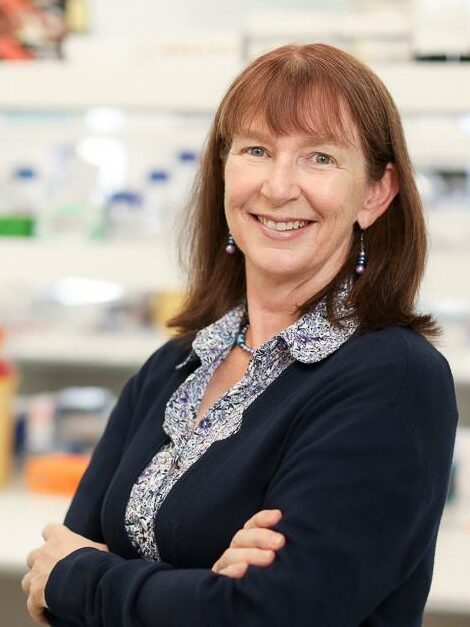My laboratory first started work on telomerase, the molecule that elongates telomeres, more than 20 years ago; at the time, we were interested in the fundamental biochemistry behind this intriguing molecule, and how we might target it for cancer therapy. This was before the scientific community knew the essential role that telomerase plays in normal stem cell maintenance, or that inherited mutations in the genes encoding telomerase components can cause the devastating disease now known as Telomere Biology Disorder. In recent years, it has become apparent to us that the expertise we have developed in telomerase biochemistry can reveal the molecular basis for these diseases, providing definitive answers for patients and families with inherited mutations in telomerase. This is a good example of the value in pursuing fundamental scientific questions; sometimes, the medical applications many years later can be totally unexpected!
My team is fortunate to be located at Children’s Medical Research Institute in Sydney, Australia, which houses Australia’s largest collection of telomere researchers. We have become the national reference centre for functional analysis of ‘variants of uncertain significance’ in telomere-related genes, which is how we first came to learn of Grayson Little and his family, whose telomerase mutations had been identified by our colleagues Lucy Fox and Piers Blombery at the Peter MacCallum Cancer Centre in Melbourne.
Grayson had inherited two different mutations in TERT, the gene that encodes one of the central components of telomerase – one mutation from mum Rachel, and a different mutation carried by dad Leighton. When we analysed these mutations in cells in the lab, we found that each mutation affected a different property of telomerase – one affected how telomerase components interact with each other, and the other affects how telomerase interacts with telomeres. Unexpectedly, when the two mutations were combined, they had a surprisingly deleterious effect on telomerase function, much greater than the additive effect of the two separate mutations, explaining why Grayson’s disease was so severe. We don’t fully understand the biochemical basis of this effect, but are continuing to look into it, since it may be telling us something important about how telomerase works.
My lab members and I were devastated to hear of Grayson’s passing; while (as a field) we are learning more about how telomerase works, we feel frustrated that nothing more could be done to treat his underlying condition. This is motivating us to contribute to developing better treatments. My lab was fortunate to receive a grant to work on methods for correcting mutations in the TERT gene, and its partner TERC, using the latest in gene editing technologies towards developing a strategy for gene therapy for patients with mutations in these genes. We are also collaborating with some of Australia’s experts in developing new gene editing technologies, and ways to deliver the gene editing tools into bone marrow cells, to attract more Australian government funding for this work. The Australian bone marrow failure research community is passionate about involving families in these endeavours, so we are delighted that Rachel Little has agreed to be an investigator on this grant application. This research is in its early stages, but we are optimistic that collectively we will contribute to gene therapy becoming a treatment option for Telomere Biology Disorders.
Watch this video honoring the life of Greyson Little
Greyson brought light and life to countless people around the globe, and he continues to impactfully touch others through the discoveries that Dr. Bryan discusses.
